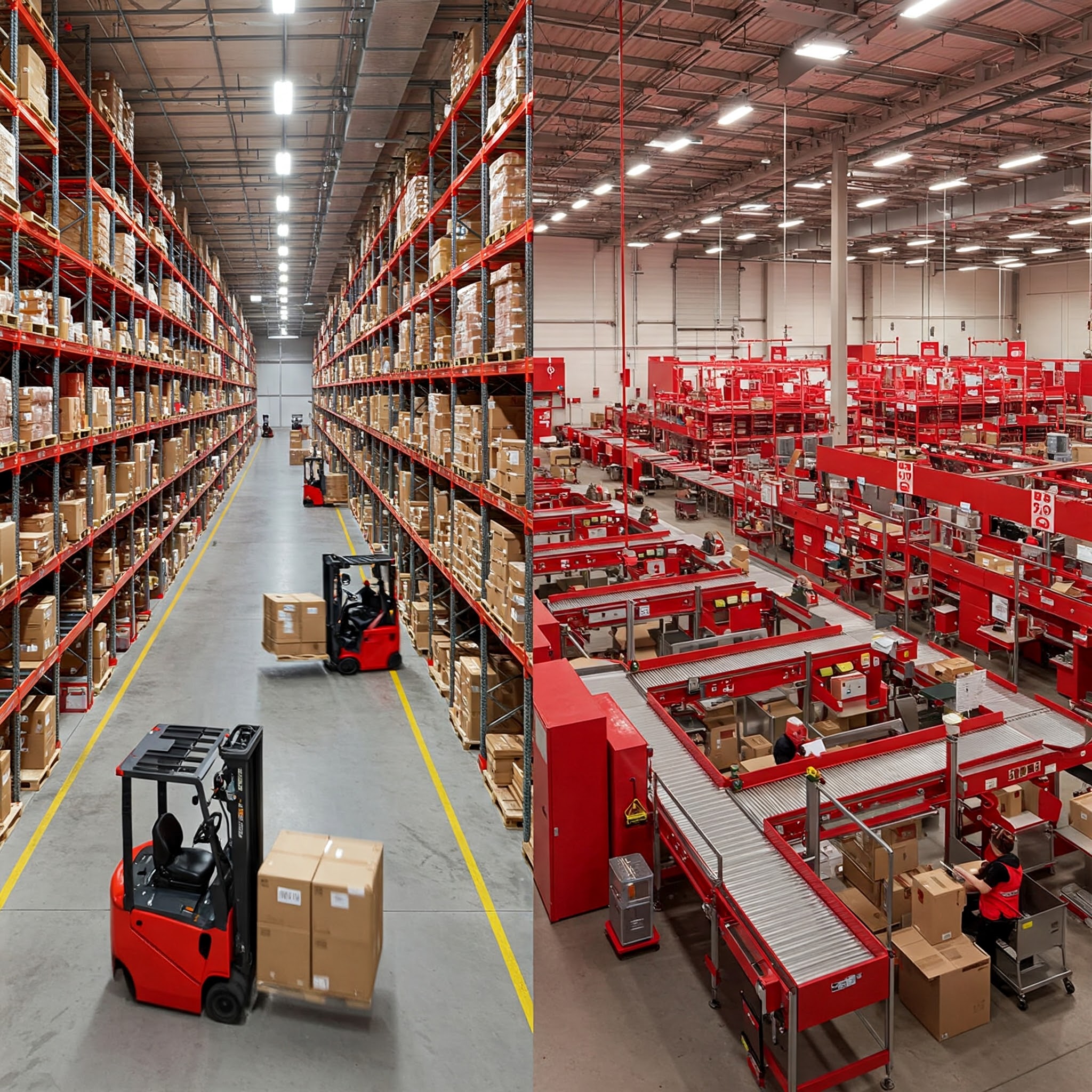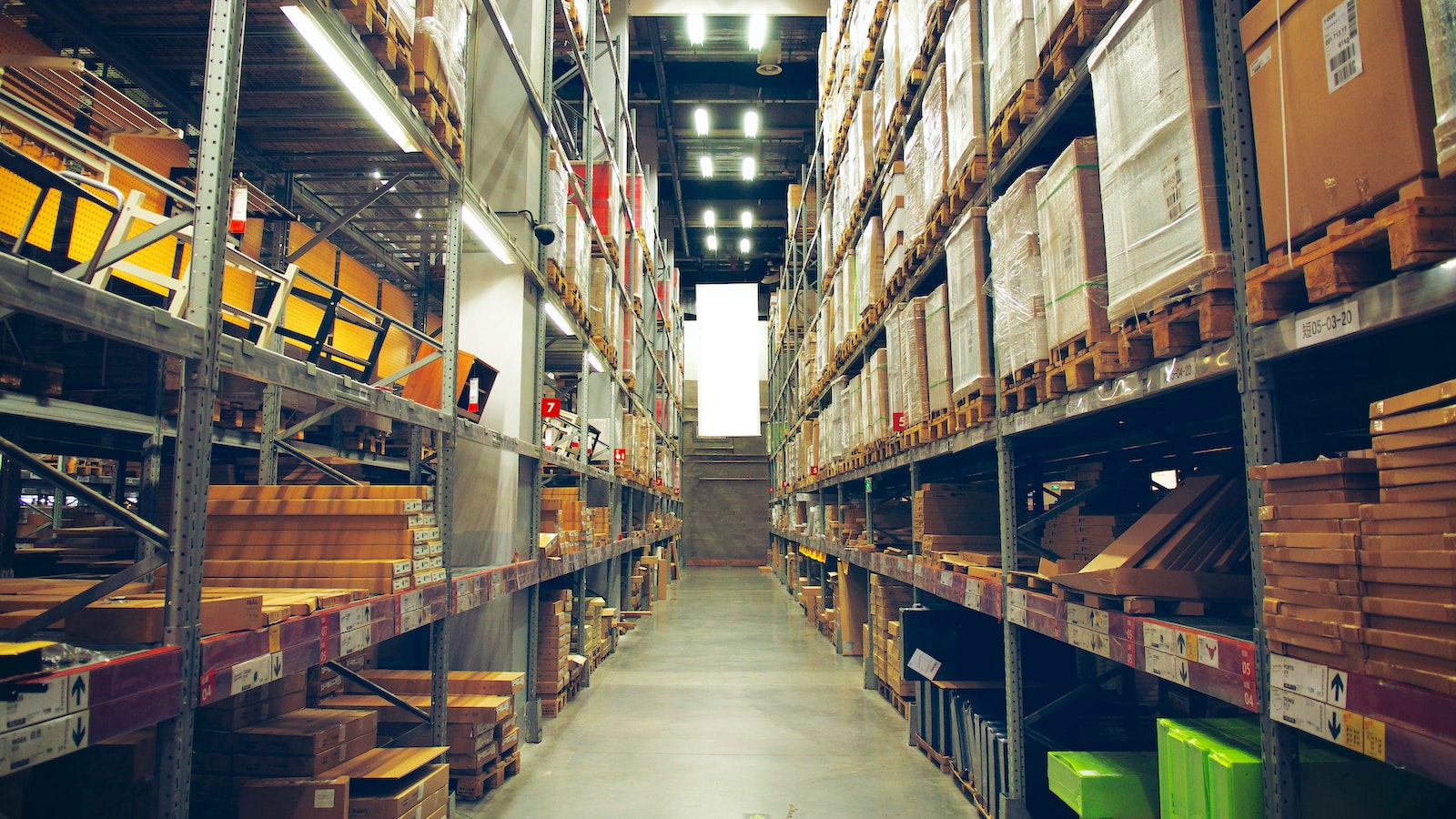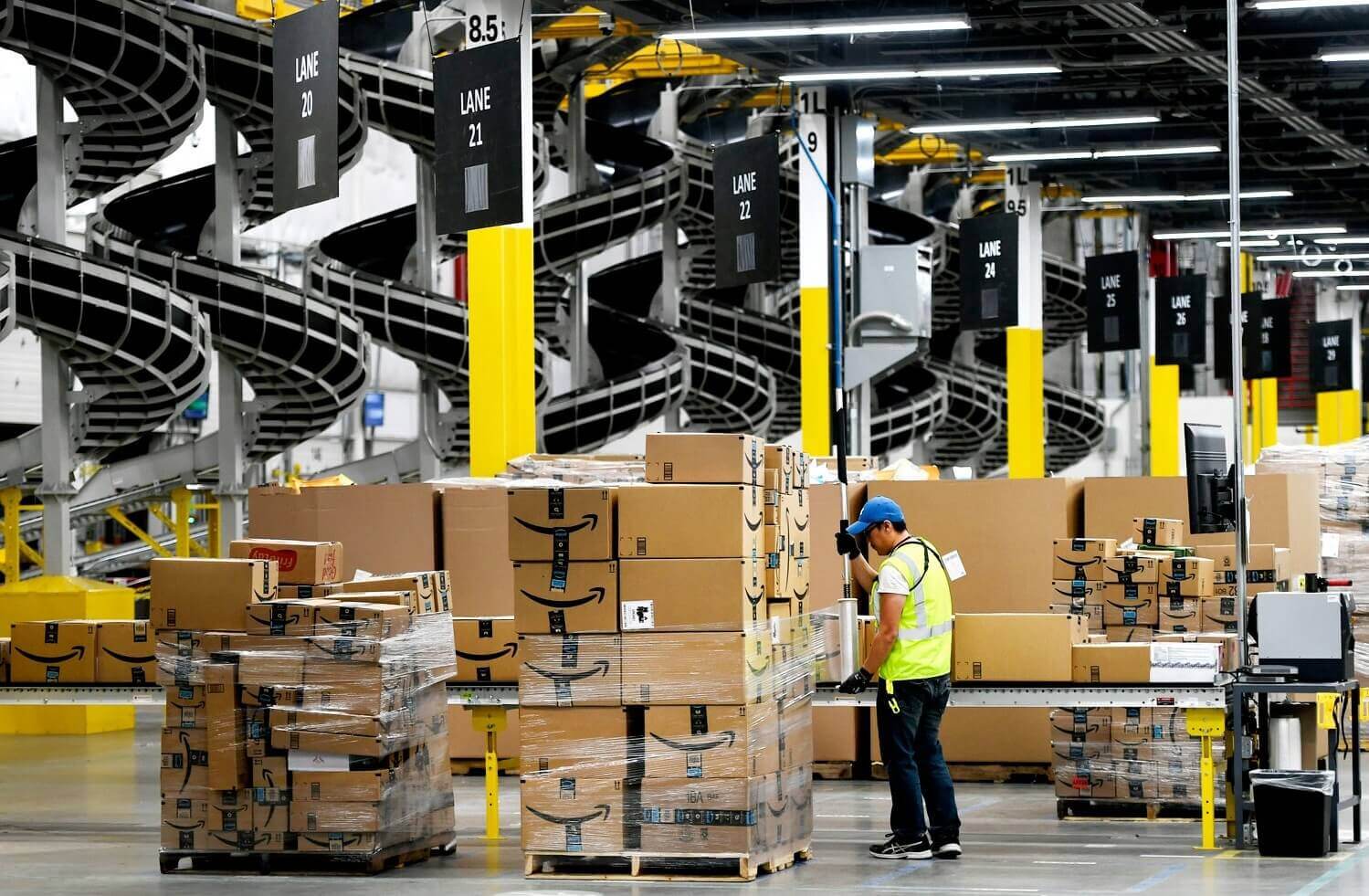When managing inventory and orders for your business, you’ll often hear the terms “warehouse” and “fulfilment centre.” While they may seem similar, they serve different purposes. Understanding these differences is key to choosing the right option for your business.
A warehouse is a large storage facility for holding goods, usually in bulk, and provides long-term storage. A fulfilment centre, however, handles the entire order process—from receiving inventory to picking, packing, and shipping orders to customers.
This article will break down the key differences between warehouses and fulfilment centres and how they meet different business needs.
What Is a Warehouse?
A warehouse is a large facility designed for storing goods and materials for extended periods. Typically utilised by manufacturers, wholesalers, retailers, and distributors, warehouses provide a secure and organised space to house inventory in bulk. These facilities are equipped with shelving, forklifts, and other necessary equipment to efficiently handle goods.
Warehouses are often strategically located to ensure easy access for transportation and distribution networks. Unlike fulfilment centers, a warehouse primarily focuses on storage rather than the active processing of orders. They are ideal for businesses looking to stockpile products, seasonal goods, or raw materials.
Additionally, warehouses may offer temperature control, security measures, and other features to protect stored items. The primary function of a warehouse is to store inventory until it is needed for further distribution or sale.
What Is a Fulfilment Centre?
A fulfilment center is a facility dedicated to processing and shipping customer orders for e-commerce businesses and retailers. Unlike traditional warehouses, fulfilment centers are highly dynamic and optimised for efficiency. They focus on picking, packing, and dispatching orders promptly to ensure timely delivery.
Operated either in-house or by third-party logistics providers, these centers serve as a crucial link in the supply chain. Fulfilment centers often incorporate advanced technologies, such as automated systems and inventory management tools, to streamline operations and maintain accuracy.
By handling order processing, returns, and delivery logistics, fulfilment centers allow businesses to focus on core activities while ensuring customer satisfaction through faster and reliable service.
What Is the Difference Between a Warehouse and a Fulfillment Center?
While both warehouses and fulfillment centers serve as storage facilities for businesses, there are key differences between the two.
Purpose
The key difference between a warehouse and a fulfillment center lies in their purpose. A warehouse is primarily used for storing goods, acting as a space where businesses keep excess inventory until needed. It’s focused solely on storage and inventory management.
In contrast, a fulfillment center goes beyond storage by handling order processing and shipping directly to customers. These centers are designed to streamline the supply chain, ensuring quick and efficient delivery.
While warehouses are ideal for long-term storage, fulfillment centers are essential for businesses prioritising fast order fulfillment and customer satisfaction. Both play crucial but different roles in logistics.
Inventory Management
Effective inventory management is critical for maintaining optimal stock levels, preventing both overstocking and stockouts. This process involves real-time inventory tracking, demand forecasting, and the implementation of efficient storage solutions.
Advanced techniques, such as just-in-time (JIT) inventory and ABC analysis, enable businesses to reduce costs while effectively meeting customer demands. Utilising technology, such as inventory management software, offers valuable insights and automates key processes, ensuring greater accuracy and efficiency.
Strategic inventory management not only minimises operational expenses but also enhances customer satisfaction by ensuring product availability. It is an essential element of a successful and well-functioning supply chain.
Order Processing Time
Order processing time is a vital component of supply chain efficiency. It refers to the period between when an order is received and when it is dispatched to the customer.
Optimising this process is essential for meeting customer expectations, particularly in industries where speed serves as a key competitive advantage. Streamlined workflows, automation, and effective interdepartmental communication can significantly improve order processing times. Identifying and addressing bottlenecks ensures smoother operations while minimising delays.
By monitoring key performance indicators (KPIs), organisations can pinpoint inefficiencies and refine their turnaround times. Accelerated order processing not only enhances customer satisfaction but also bolsters brand reputation in today’s time-sensitive marketplace.
Storage Capabilities
Efficient storage capabilities are fundamental to effective inventory management. This involves utilising warehouse space optimally while ensuring goods are stored securely and remain easily accessible.
Advanced storage solutions, such as vertical racks and automated shelving systems, maximise space utilisation and reduce manual labor requirements. Well-designed layouts help prevent inventory damage while improving tracking and retrieval processes. Additionally, implementing inventory management strategies, such as First-In-First-Out (FIFO) or Last-In-First-Out (LIFO), supports consistent product quality and inventory flow.
Storage requirements vary depending on the nature of the goods, from temperature-controlled facilities for perishable items to secure storage for high-value products. Strong storage capabilities directly enhance operational efficiency by balancing capacity, cost, and accessibility.
Shipping Options
Providing a diverse range of shipping options is essential for meeting customer expectations and maintaining a competitive edge. Modern consumers demand flexibility, including standard, expedited, and same-day delivery services.
Partnering with reliable shipping providers is critical to ensuring timely and cost-efficient logistics. Additionally, implementing real-time tracking systems enhances transparency and fosters customer trust.
To cater to various customer needs, businesses must carefully balance delivery speed with cost. Sustainable practices, such as utilising eco-friendly packaging or adopting carbon offset initiatives, are becoming increasingly important in today’s market.
By leveraging advanced logistics technologies and continuously optimising delivery routes, companies can improve operational efficiency. Offering a broad spectrum of shipping solutions not only elevates customer satisfaction but also cultivates long-term loyalty.
Operational Costs
Operational costs include all expenses associated with daily business activities, such as manufacturing, labor, logistics, and overhead. Effective management of these costs is crucial for achieving profitability and ensuring long-term sustainability.
Organisations can reduce operational expenses by automating repetitive processes, optimising resource allocation, and negotiating favorable supplier contracts. Adopting lean methodologies and energy-efficient technologies can help minimise waste and eliminate unnecessary expenditures.
Regular audits and data-driven strategies are instrumental in identifying opportunities for cost savings. However, it is vital to strike a balance between cost reduction and maintaining service quality, as overly aggressive cuts can negatively impact customer experience.
Efficient management of operational costs enables businesses to retain competitive pricing while reinvesting in innovation and growth, ensuring continued success in an evolving market.
So these are the main differences between a warehouse and a fulfillment center. It is important for businesses to carefully consider their needs and goals before deciding which option is best for them.
How To Choose Between A Warehouse Vs Fulfilment Centre?
Now you know the differences between a warehouse and fulfilment centre, you may wonder which option is best for your business. The decision ultimately depends on your specific needs and goals. Here are some factors to consider when choosing between a warehouse vs fulfilment centre:
- Inventory Management: If you have a large inventory that requires careful management, a warehouse may be the better choice. Warehouses typically offer more storage space and can accommodate bulk orders more efficiently.
- Order Processing: Fulfilment centers are designed for quick order processing and shipping. If your business involves high volumes of orders with short turnaround times, the streamlined processes of a fulfilment centre may be more suitable.
- Geographical Location: The location of your warehouse or fulfilment center can have a significant impact on your shipping costs and delivery times. If you need to reach customers in specific regions, it may be beneficial to have multiple warehouses or strategically located fulfilment centers.
- Shipping Options: Warehouses usually offer a wider range of shipping options, including bulk shipments and LTL (less-than-truckload) services. This may be advantageous if you deal with large or irregularly-sized products that require specialised handling during transportation.
- Customer Service: While both warehouses and fulfillment centers handle the storage and shipping of products, they differ in terms of their customer service offerings. Fulfillment centers often provide additional services such as product returns, exchanges, and even packaging and labeling services for a more personalised customer experience.
When choosing between a warehouse and a fulfillment center, consider your business needs. For high order volumes and a streamlined process, a fulfillment center may be best. If you have fewer orders and want more inventory control, a warehouse might be the right choice.
Can A Combination of Warehouse and Fulfillment Center Be Beneficial?
Absolutely, combining a warehouse and a fulfillment center can be highly beneficial for businesses. This hybrid approach allows companies to store bulk inventory in the warehouse while using the fulfillment center to manage and ship smaller, frequent customer orders.
By integrating these two operations, businesses can enjoy cost-effective bulk storage and efficient order processing, ensuring timely delivery to customers. It also provides flexibility to scale operations as demand fluctuates, balancing long-term storage with real-time distribution needs.
Additionally, this combination helps businesses cater to diverse customer expectations while maintaining better inventory control and minimising shipping delays. For companies experiencing growth or dealing with seasonal demand spikes, leveraging both facilities can result in increased efficiency, cost savings, and improved customer satisfaction.
Examples of When Businesses Use Both Types of Warehouses
There are several scenarios where businesses may benefit from using both distribution and storage warehouses. Here are a few examples:
- E-commerce companies: With online shopping on the rise, e-commerce businesses need both storage and distribution warehouses to meet demand. Storage warehouses hold inventory during off-peak times, while distribution warehouses handle order fulfillment during busy seasons, helping manage inventory efficiently.
- Manufacturing companies: Manufacturing businesses use storage warehouses for raw materials and unfinished goods, while distribution warehouses package and ship finished products. This streamlines production and ensures on-time deliveries.
- Retailers: Retailers often store seasonal or limited-time merchandise in storage warehouses until it’s ready to sell. Distribution warehouses handle daily customer orders, helping manage inventory and reduce overstock or understock issues.
These are just a few examples of businesses that rely on storage and distribution warehouses for their daily operations. The demand for these services has increased significantly in recent years, leading to the rise of specialised warehouse companies that offer customised solutions to meet the specific needs of each business.
Mistakes to Avoid
Managing storage and distribution warehouses requires avoiding common mistakes to ensure smooth operations and maximise profits. Here are key errors businesses often make in warehouse management:
- No clear plan: Without a defined plan, warehouses can become inefficient, disorganised, and slow at fulfilling orders.
- Ignoring technology: Relying on manual processes or outdated systems leads to inaccuracies, delays, and higher costs. Investing in tools like inventory software, barcode scanners, and automation improves efficiency.
- Poor inventory tracking: Failing to track inventory properly can cause stockouts or overstocking, impacting customer satisfaction and increasing costs.
- Inadequate training: Staff need proper training on processes, equipment, and safety. Skipping this step leads to errors, accidents, and inefficiency.
- No standardisation: Standardised processes create consistency and efficiency. Without them, employees use inconsistent methods, causing confusion and errors.
These are the top mistakes that businesses make when it comes to inventory management.
Is A Better Inventory Management System Necessary?
Yes, implementing a better inventory management system is essential for businesses aiming to streamline operations and reduce costly errors. With an advanced system, companies can improve accuracy, track stock levels in real time, and avoid issues like overstocking or stockouts.
Modern inventory management systems also integrate with other tools, providing insights that aid in demand forecasting and decision-making. These systems enhance productivity by automating repetitive tasks, reducing the likelihood of human error, and enabling staff to focus on higher-value activities.
Without an efficient system, mismanagement can lead to lost revenue, dissatisfied customers, and wasted resources. Investing in a better inventory management system is key to fostering efficiency, maintaining accuracy, and ultimately driving long-term success in a competitive market.
FAQs
What’s the difference between a distribution center and a fulfillment center vs warehouse?
A distribution center and a fulfillment center vs warehouse serve different roles. Warehouses focus on long-term inventory storage, while fulfillment centers handle the entire fulfillment process including picking, packing, and shipping for ecommerce companies.
Should an ecommerce business lease warehouse space or use fulfillment services?
For an ecommerce business, it often makes more sense to use fulfillment services instead of lease warehouse space. Fulfillment centers streamline logistics operations and speed up the fulfillment process, which benefits both the business owner and customers.
How do logistics operations differ in a fulfillment center vs traditional warehouse?
In a fulfillment center vs traditional warehouse, logistics operations are more focused on the end-to-end fulfillment process. Fulfillment centers are built to support ecommerce companies with fast shipping, while warehouses prioritise bulk inventory storage.
Why should a business owner choose fulfillment services over a warehouse?
A business owner running an ecommerce business may prefer fulfillment services because they offer more than just inventory storage. Fulfillment centers support real-time order processing, better logistics operations, and are designed for modern ecommerce companies.
Conclusion
Understanding the difference between a warehouse and a fulfilment centre is key to building an efficient supply chain for your business. Warehouses are ideal for bulk storage and long-term inventory, while fulfilment centres focus on fast order processing and delivery.
Whether you’re an e-commerce retailer handling high order volumes or a manufacturer managing raw materials and goods, the right facility—or combination of both—can improve logistics, cut costs, and boost customer satisfaction.
By evaluating factors like inventory size, order frequency, shipping needs, and customer expectations, you can choose the best solution to support your growth. In today’s market, aligning your storage and fulfilment strategy with your goals isn’t just about logistics—it’s a competitive edge.







